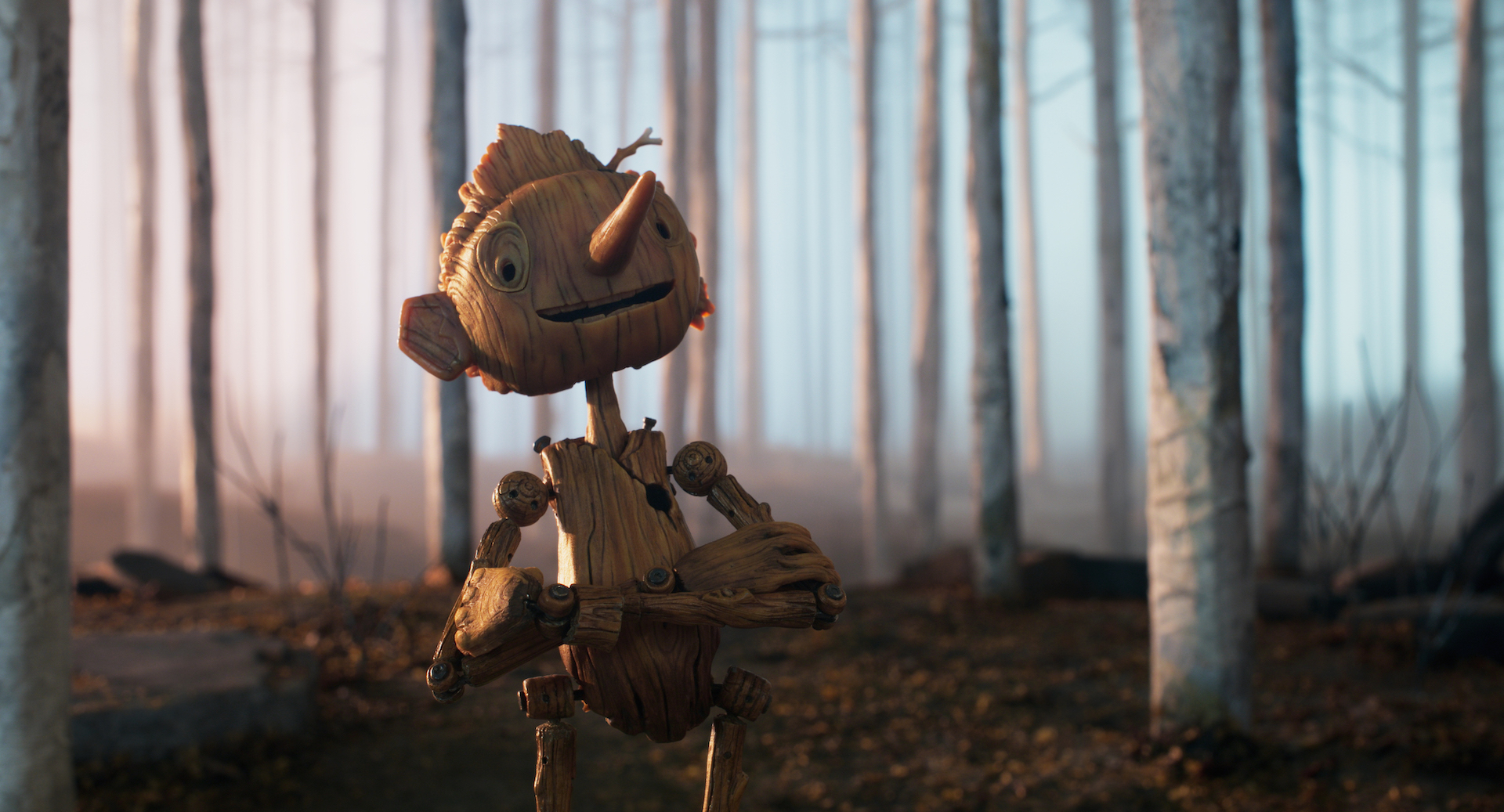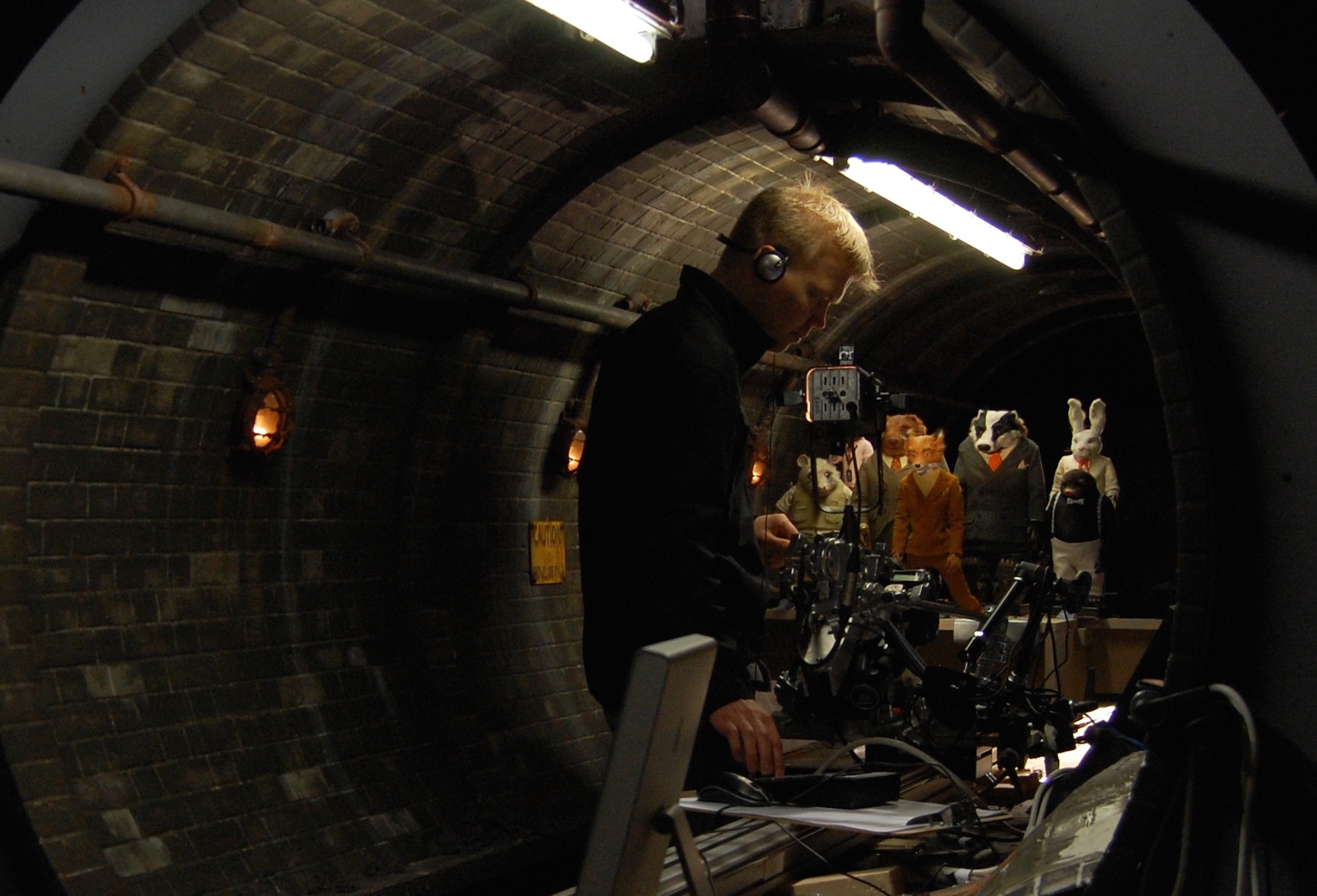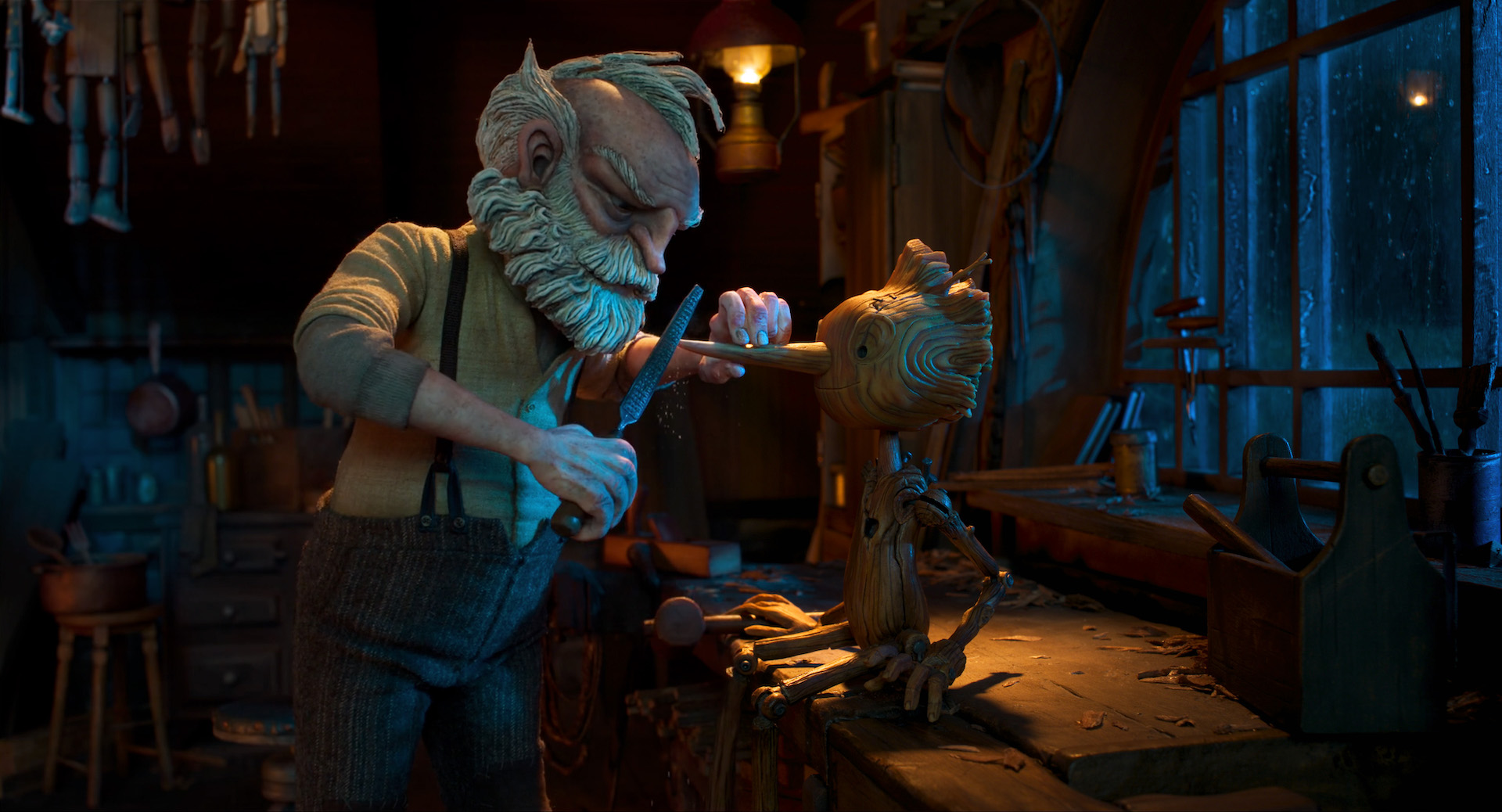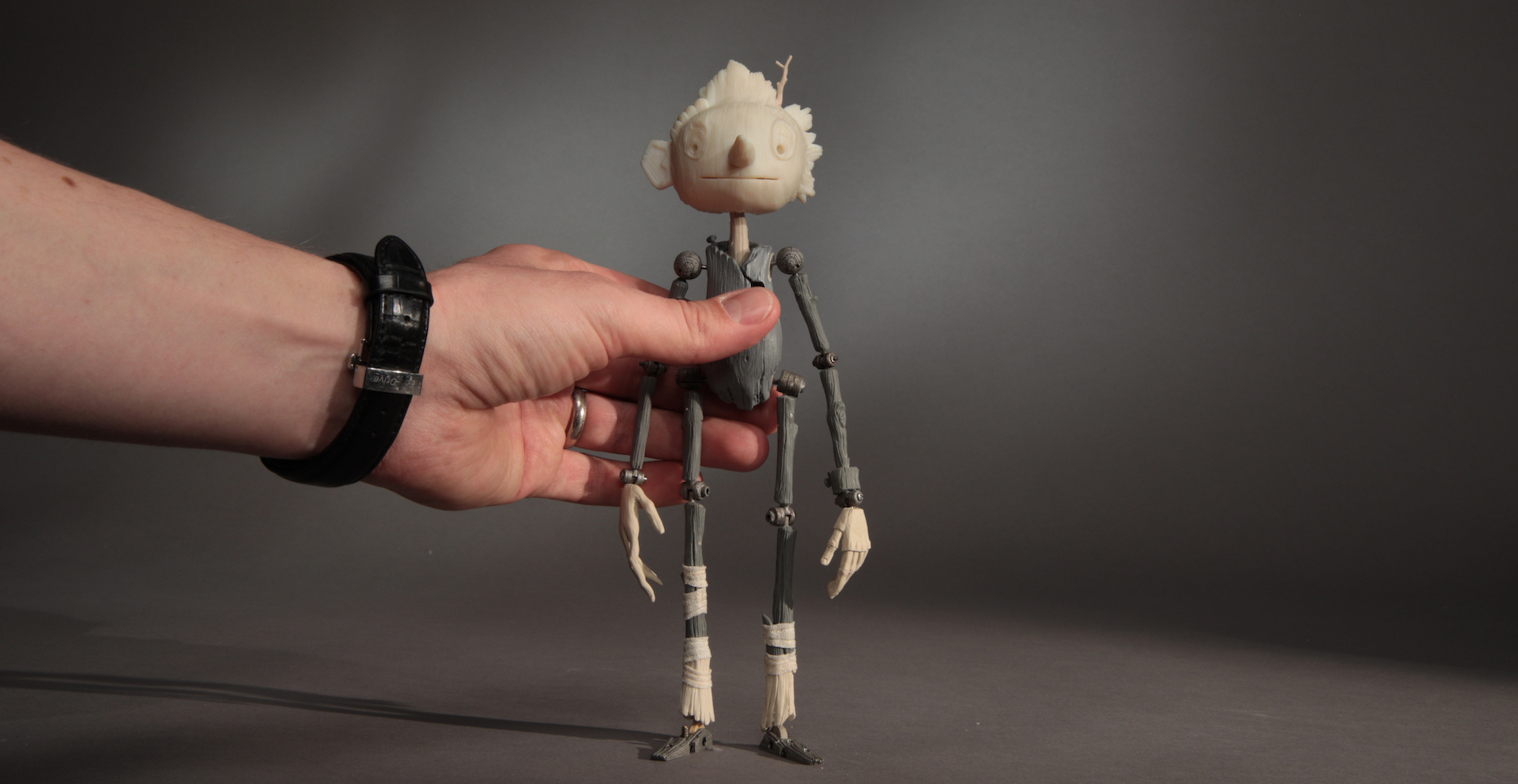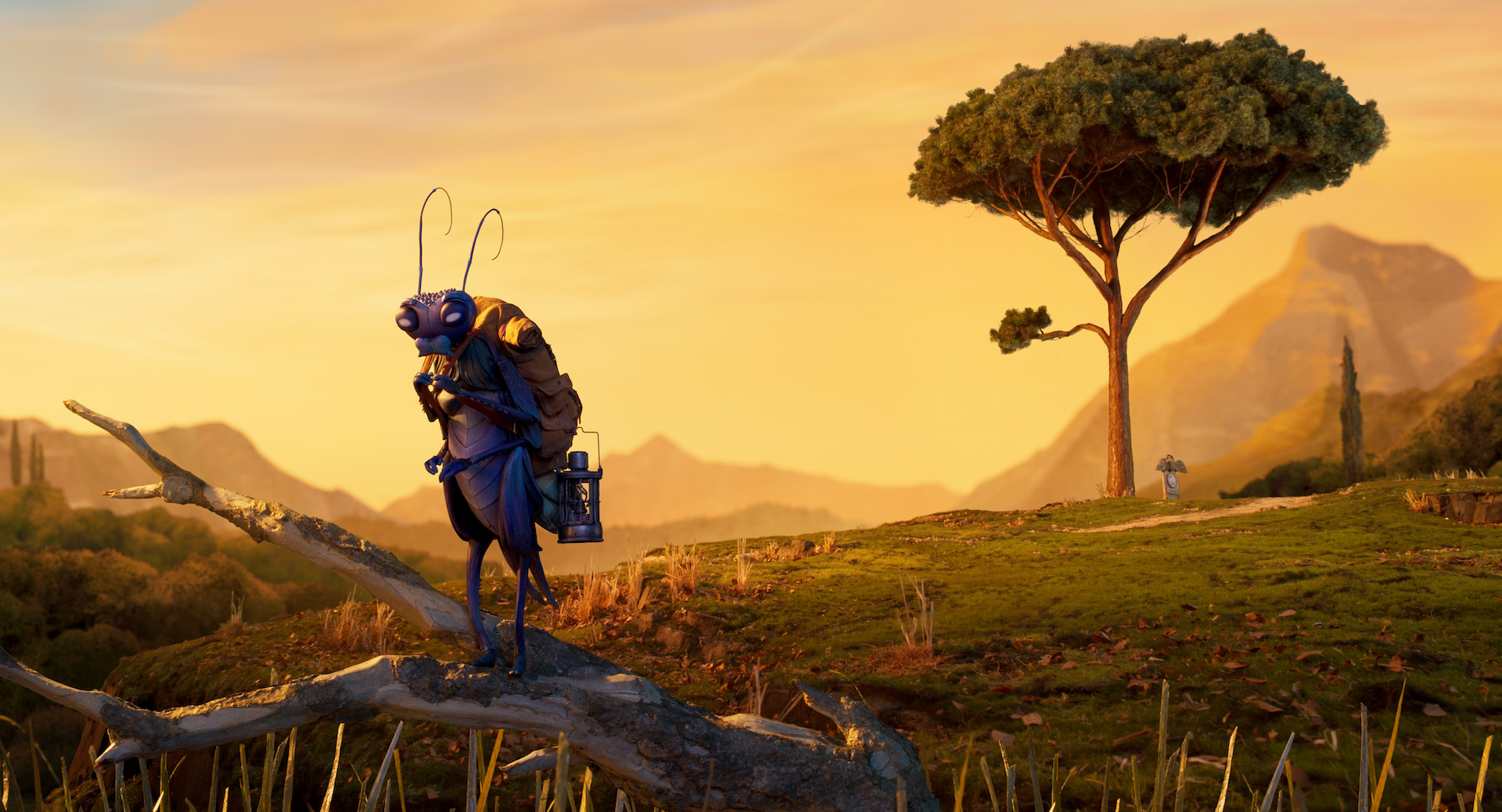Meet Brian Leif Hansen
Animation Supervisor on Guillermo del Toro’s “Pinocchio” (Netflix).
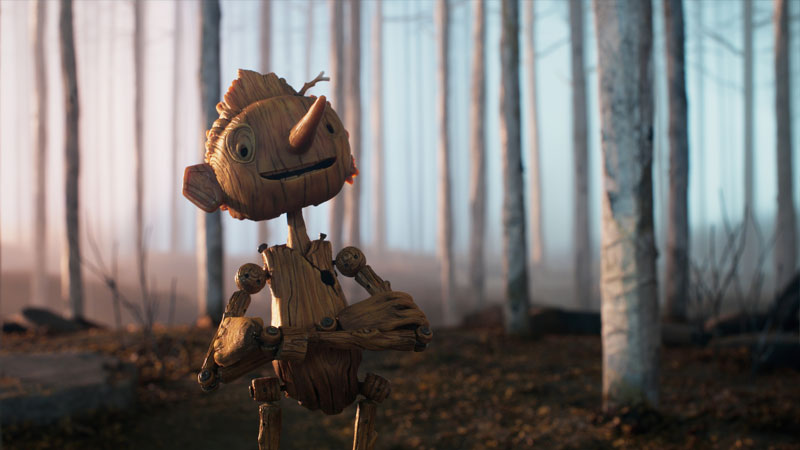
By Alyssa Wejebe for WeAnimate Magazine #010
Talking foxes, a reanimated dog, an elephant ride for three, and now a wooden boy—that and more populate Brian Leif Hansen’s animation, a body of work seen by thousands over the years.
With credits on stop-motion films like Tim Burton’s Corpse Bride, Fantastic Mr. Fox, and Frankenweenie, Hansen’s portfolio in animation is lengthy.
It even includes work with stop-motion juggernaut LAIKA on several of their films: ParaNorman, The Boxtrolls, Kubo and the Two Strings, and Missing Link.
Now his latest work is featured in Guillermo del Toro’s Pinocchio, a new retelling of the classic book by Carlo Collodi.
But Hansen’s path to a substantial stop-motion career wasn’t always so direct.
After growing up on a dairy farm in Jutland, Hansen became a chef.
He cooked for restaurants across Denmark and France. According to Zerply Industry Magazine, he even worked for a place that was named “Restaurant of the Year” in 1996.
But animating appealed to Hansen as another creative pursuit, so he trained at The Animation Workshop in Viborg for his second career.
Hansen discussed his winding career path and approach to stop-motion, the areas where cooking and animation overlap and diverge, and more on Guillermo del Toro’s Pinocchio with WeAnimate Magazine.
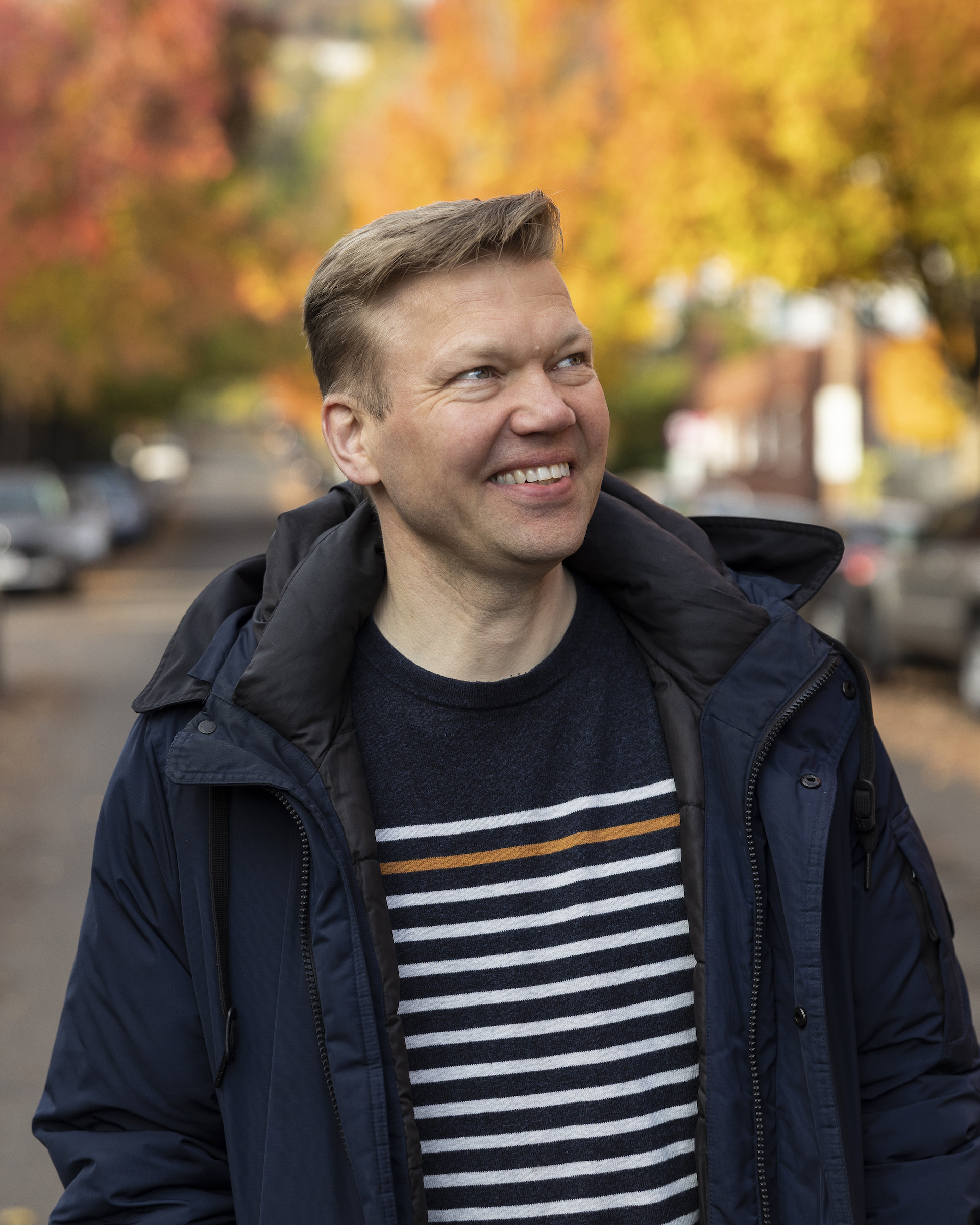
WeAnimate Magazine: Could you talk more about your transition from chef to animator? What drew you to animation?
I always had a great fascination with puppets, starting with The Dark Crystal.
The magic of having something clearly made out of fabric and silicon making a performance and taking you into whatever fantasy world they were living in, creating characters that you, as a viewer, know are not real but still have empathy with, is very interesting to me—of course, I didn’t have those kinds of thoughts when I watched The Dark Crystal as a 10-year-old, but still, there is a magic embedded in these films that draws you into the world in a very compelling way.
Initially, it was the Muppets that I was drawn to, and if I had known that Jim Henson had a creature shop in London, I would probably have gone there.
But I didn’t know, and the fact that I didn’t know anybody working in that kind of industry, and nobody in my family was occupied by anything looking like this, meant that I just chose the next best thing, which was working in the kitchen.
I am immensely grateful that I tried and succeeded in this field, and it’s still a great part of me—there’s probably not a day where I don’t think about it or reuse some of the skills I got in the kitchen.
WA: Are there similarities between cooking and animating, like in terms of creation?
I actually think that being a chef prepared me for the job as an animator—there’s a need for certain stamina in both professions—working in the kitchen, there is a lot of repeating actions that have to be repeated to perfection every time while working fast and still producing a product, constantly assessing and quality checking one’s own work, trying to achieve high quality, proving that you can do it again and again as well and as interesting as the first time becomes part of the job.
And then there is the creation of the art, which is also quite similar in the kitchen.
You produce little masterpieces on the plate, all of them have to be individual and special, and all of them have to fit into a bigger narrative of the menu and the style of the kitchen—like when you’re making a film, shot to scenes to the whole thing.
So yes, I would think there are a lot of similar traits—however, one thing that I really missed from the kitchen was the immediate feedback. Every night was like performing on the stage, and every night you went out and “bowed” in front of your audience.
In animation, it can sometimes take months, even years, before anybody sees your work—I missed that instant feedback in the beginning of my animation career.
A bit of a side advertisement, the kitchen I worked in most is still around; it’s just south of Randers in Denmark and still doing very well.
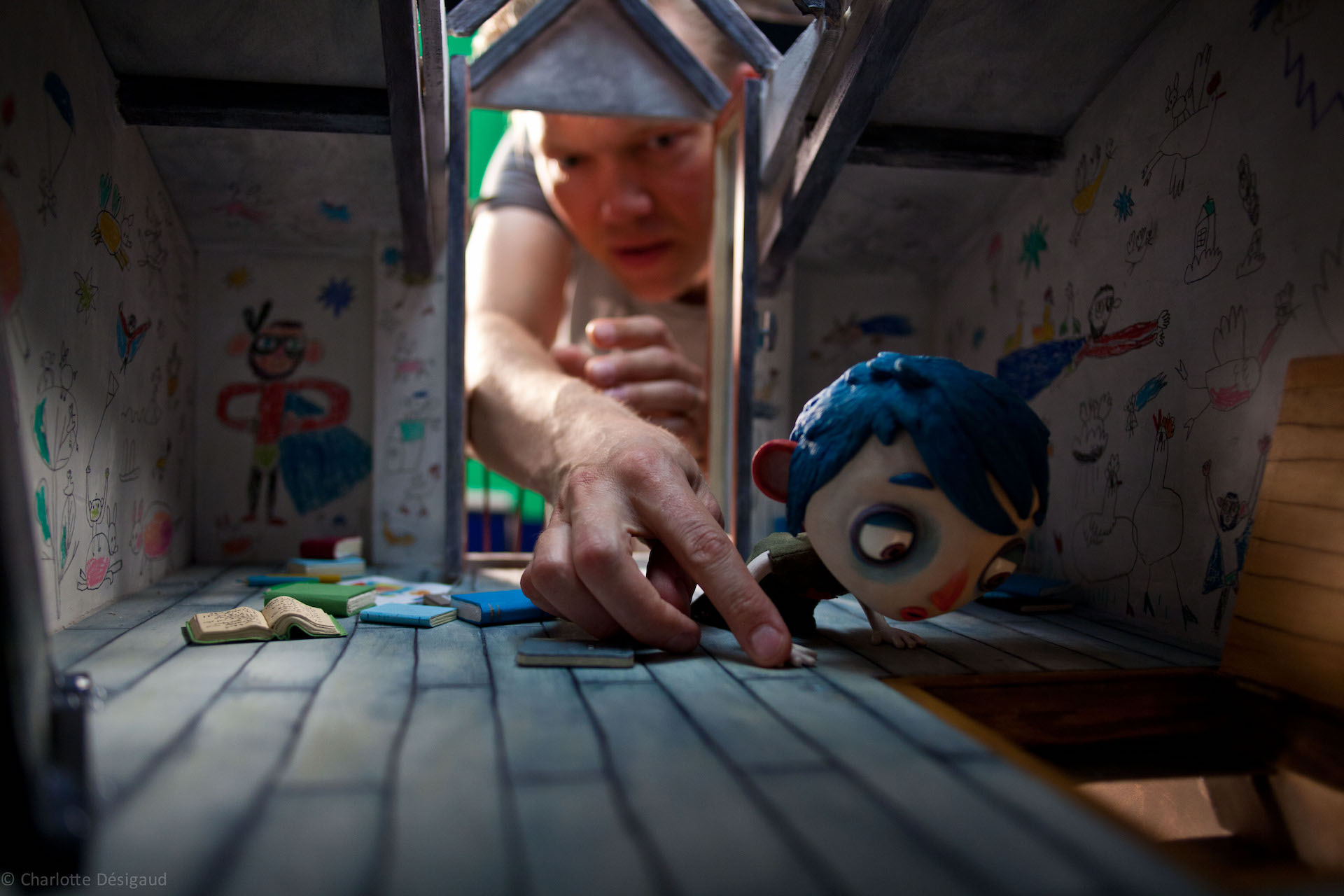
WA: Why did you specifically choose to specialize in stop-motion over other forms of animation, like 2D animation and CG animation?
As for the medium of stop-motion, it is probably a little bit of a coincidence.
When I finally decided to try it out in the “film business,” I initially applied for a 2D course at The Animation Workshop in Viborg.
Out of random acts of the gods, a stop-motion course appeared out of the blue, and I really quite quickly fell in love with it—and my 2D skills were really not up to snuff anyway.
I did quite a bit of CG animation in between stop-motion jobs for a while, but the interaction with sets, lights, cameras, and the crew on the stop-motion set is just so exciting that it’s hard to compete with.
WA: I’m more familiar with The Animation Workshop in Denmark as a place for 2D animation. But you learned stop-motion animation there?
Yes, I did two courses at The Animation Workshop, one in 1999 and one in 2001, and both ran for four months.
At the end of the first one, we all went to The National Film School in Copenhagen to animate on two graduation stop-motion films—Trylle Vilstrup’s “Love Birds” and Kunuk Platoú’s “Nanoq.”
I cannot praise The Animation Workshop enough for doing an excellent job reaching out to the absolute top talent in the business at the time and getting us a real solid foundation for a future in the stop-motion world.
I’m uncertain how it is now, actually—but to my knowledge, I don’t think there are any organized stop-motion programs going on at this moment.
I guess throughout my career, I’ve been extremely lucky timing-wise.
I quit my job as a chef at the same time as Egmont Imagination planned to do a feature film with a mix of stop-motion, puppets, and marionettes, and therefore needed stop-motion animators, which there weren’t that many of in Denmark, so they collaborated with The Animation Workshop to train some new stop-motion animators.
I believe that is the only reason they established the stop-mo course at The Animation Workshop in the first place—the workshop had this goal that they would only educate people that might have a chance to get work in the professional world—and after Egmont Imagination closed after making 75 episodes of the Little People (which also was my first professional job), they probably couldn’t see the industry going on, so the stop-motion courses stopped.
WA: Do you have advice for people who want to work in stop-motion?
Get animating!
I think you could save a lot of time in your trial-and-error phase by reaching out to somebody who is already doing stop-motion.
I bet most people would be happy to look at your stuff and give you pointers to better your work. Remember that not all stop-motion needs to have a puppet standing upright—it can be difficult to get your hands on a good puppet, but turning the camera downwards and shooting on the table takes away the gravity, and you can still do great performance.
See Kiri and Lou, for example.
Get some frames under your belt, practice, practice, practice!
And getting a job on a TV series or something, where the turnaround time is a little bit quicker, is helpful later in your career because you get the experience of starting a shot, ending a shot, starting a shot, ending a shot.
Remember, you’re working as an artist in an industry that wants to get things done in a reasonable amount of time.
Guillermo del Toro’s Pinocchio – (Pictured) Sebastian J. Cricket (voiced by Ewan McGregor). Cr: Netflix © 2022
WA: What is your process for stop-motion?
You are kind of an engineer and an artist at the same time.
Quite a lot of the things you do to prepare for the performance have a lot to do with getting all the hardware right and in the right place—rigging is a big part of this to help you achieve exactly what you want—and planning out positions of the camera and the puppets.
And once you’ve got all that down, then you start to concentrate on the actual performance, doing all the normal things you do when animating, getting direction from the director, doing tests to make sure that the lighting and camera departments are happy, and then it is up to you to give the puppets life.
Most times, you lean heavily into the voice performance. You listen to it a lot to catch all the little nuances there are in the voice—pauses, air intake—little sounds that, if you animate them, you sort of amplify them, and they become part of the character.
Where if you don’t pick them up, they just fall in the background and disappear.
WA: Do you have any favorite performances that you’ve animated?
I’ve got some Snatcher shots from The Boxtrolls that I think are pretty good.
I’m also very proud of the animation of the Elephant in Missing Link—it was quite a difficult thing to pull off, but I think it looks pretty good.
And the scene of Victor bringing Sparky back to life from Frankenweenie is quite successful.
WA: Do you ever get involved with designing the puppets for stop-motion?
It depends a lot on when you come onto the project.
If you are there from the beginning, it’s a natural process of your work that you interact a lot with the head of department in puppets and costume to optimize the performance of the puppet—one notable experience on that front for me is the Elephant from Missing Link.
I took that from the very first build of the very first temporary armature to the finished result, which I also animated—that whole process of that build was about 11 months.
I think it was a really great experience to collaborate with the rigging department and puppets department to make this beautiful purple creature come to life.
WA: Your CV online says you were the animation supervisor on Guillermo del Toro’s Pinocchio, while for a number of other movies you worked as an animator, key animator, or lead animator. Was the role of animation supervisor different from your experience as an animator? Or was there little difference?
My job as animation supervisor on Guillermo del Toro’s Pinocchio couldn’t be more different from my previous jobs as animator—I only did some animation tests in the very beginning of the show and only animated half of a shot in the film.
My job on the film was to initially set the animation style and the way we would approach the animation in this particular stop-motion film—alongside being very involved in the build of especially Pinocchio, but also the other characters, to help ensure that they were as animatable as they could be and be able to perform their task in the movie.
I also advised on props when they were handled by puppets or had to be animated—curtains, flags, and so on. Secondly, I was a consultant to the directors Guillermo del Toro and Mark Gustafson.
I also spent day-to-day being Gustafson’s right-hand man on the studio floor, helping out with briefs and animation notes.
And last but not least, helping the animation team of more than 40 animators—at the peak of the shoot—keep to the style, advising on performance, and helping out on particularly difficult, technically challenging shots, and being a general cheerleader for the entire animation team (which also included a small RP department and the rigging team).
So, yes, absolutely, a different experience.
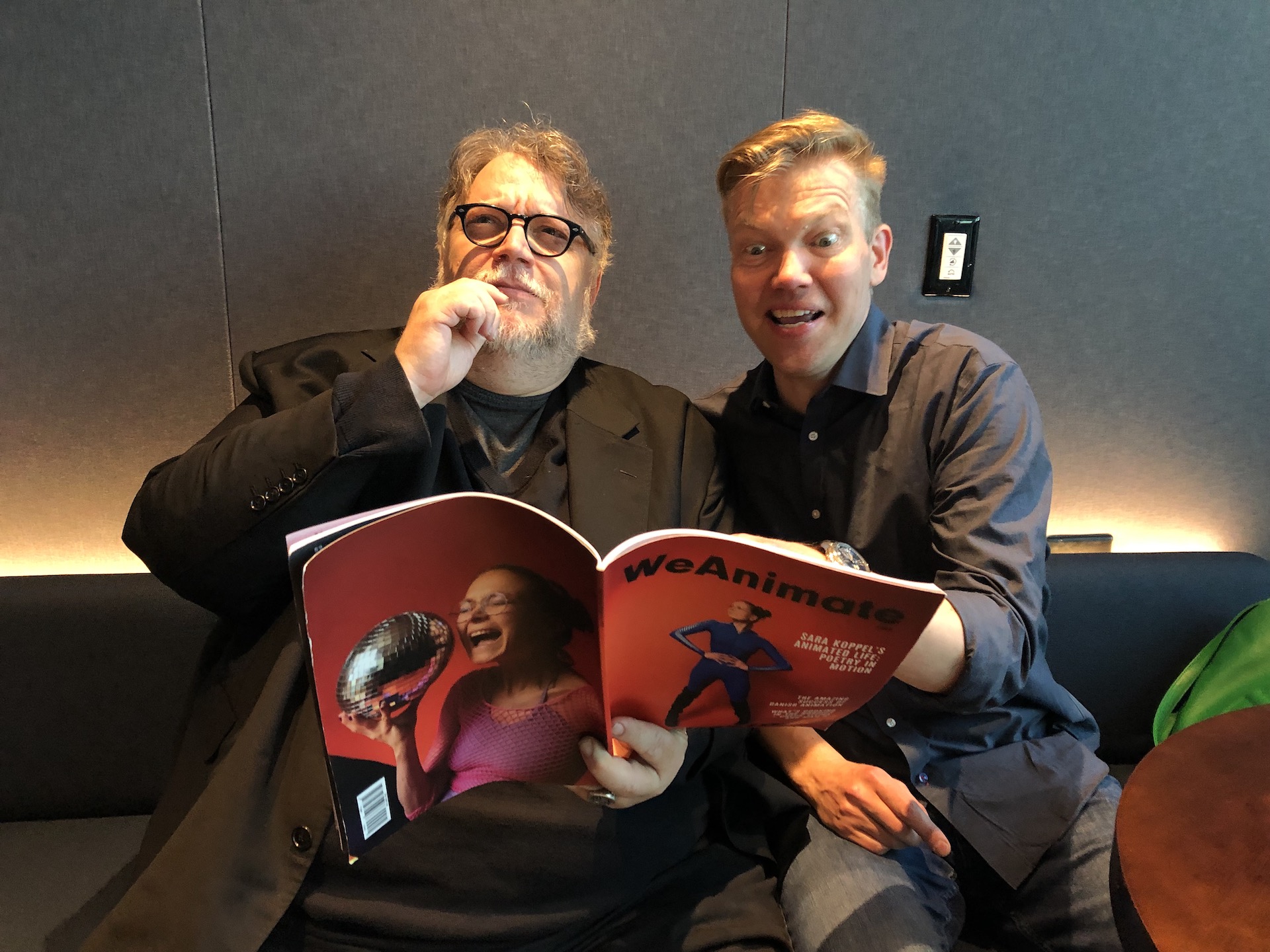
Guillermo del Toro reading WeAnimate Magazine #009 together with Brian Leif Hansen
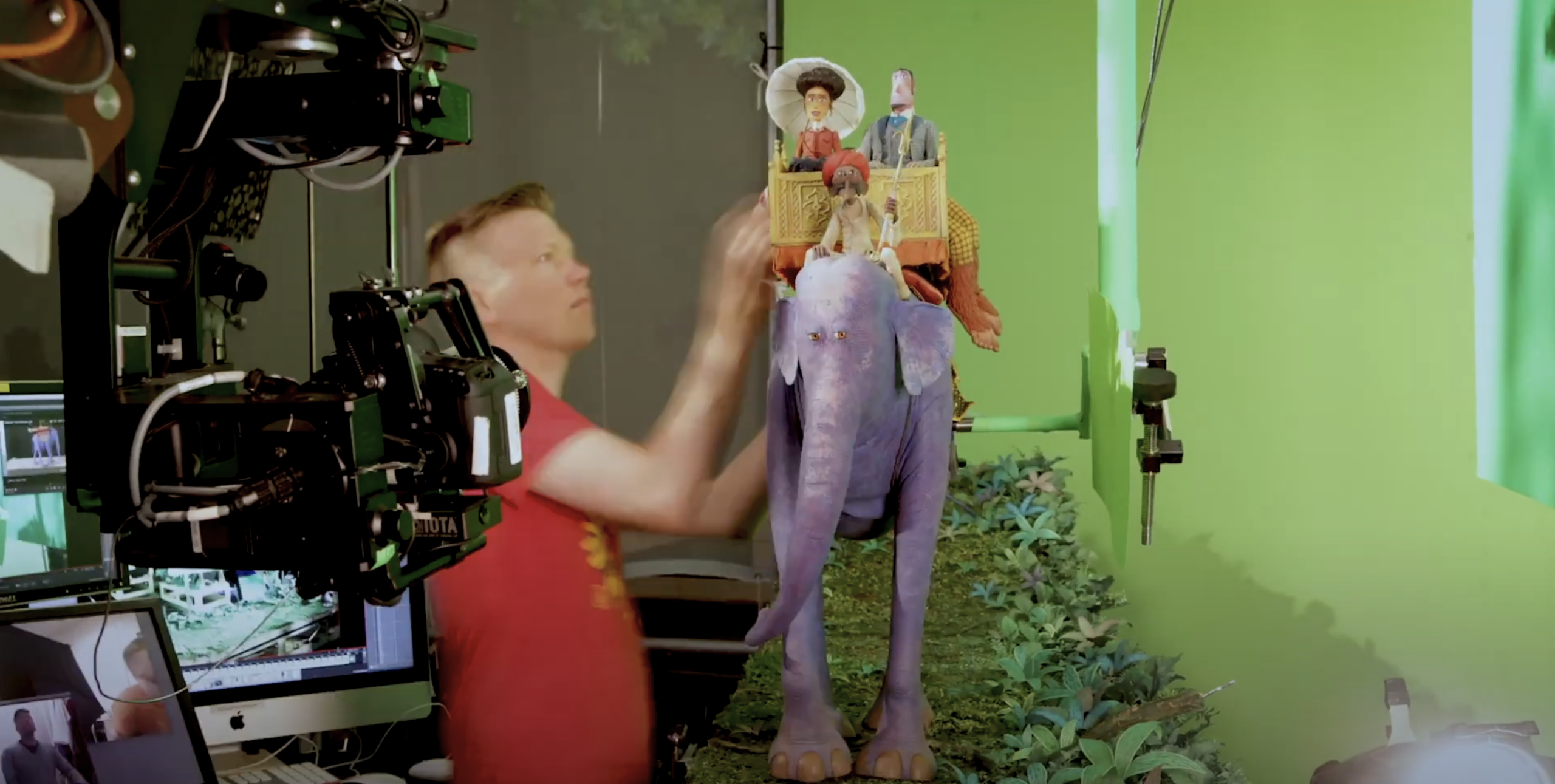
WA: What kind of research did you do for Guillermo del Toro’s Pinocchio? Did you read the original book and watch various adaptations of it? Or did research go in different directions?
I did read the original book by Carlo Collodi—it’s completely bonkers—and there’s so much more stuff going on than in the Disney version, which I didn’t watch again, because I didn’t want to be making decisions that were influenced by their version.
There was a bit of singing and dancing in this version that we did research, also on the scope of the water and four-legged creatures.
Guillermo del Toro’s version of the film is keeping to the same ideas (there is a wooden boy in it), but quite a few of the things we know from previous versions are either left out or changed to fit this particular version.
One thing that is definitely different compared to most previous versions is that Pinocchio’s facial features are hard; there’s very little volume change, which I think suits the Wooden Boy—it’s always slightly creepy when the wood grain starts moving around on the face of Pinocchio, so we deliberately tried to stay as far away from that as possible.
WA: You’ve worked on a lot of stop-motion films. How do you view being in demand as an animator for these productions?
Again, I feel that I’ve been extremely lucky to land right in the middle of the “golden age of stop-motion.”
As in any field, I think your career is formed by the connections that you make while working on the job, and for me, the stop-motion animation community has always been very international, so you’re very quickly able to build up a network of colleagues from all over the world, and because the business is relatively small, your services are quite often needed right after you’ve laid down your tools on your current job.
WA: What are your thoughts on how stop-motion in general has developed over the years?
The technology around the puppets has developed enormously.
When I began animating, you quite often had to manually turn off your work light, move the camera to the next frame if it was on a MoCo rig, put in a green screen for an additional exposure, press another button to move additional lights, cover your screen up to avoid light spill, take the frame on your video assist camera, take the frame on the real camera, check that the frame is actually taken and then you’re done.
Nowadays everything runs on a very clever computer that does all of these things for you.
Set shifts, which occur quite often due to a temperature shift between night and day—it’s not a disastrous event anymore because of the digital powers that we have at our disposal.
The images we work with are much clearer, so it’s easier to keep an eye on everything, which I think is part of why stop-motion animation is looking so much more smooth than it did just a few decades ago.
Another thing that’s really developed is the rigging of the puppets, which means that you can control the increments better, and therefore do a more precise performance when you’re not completely reliant on the ball-and-socket joints, but have the option of a finer adjustment available.
So, on a technical front, everything is different, but from the performance point of view, everything is the same—it’s about putting life and soul into an otherwise lifeless object.
Another thing that has changed is that everything is much more accessible—all the films are shot on digital cameras, which anybody can get their hands on, and the computer programs that previously only belonged to large production companies are now, to a certain extent, available to anybody, which make a massive change to who can make films, which I think is very exciting.
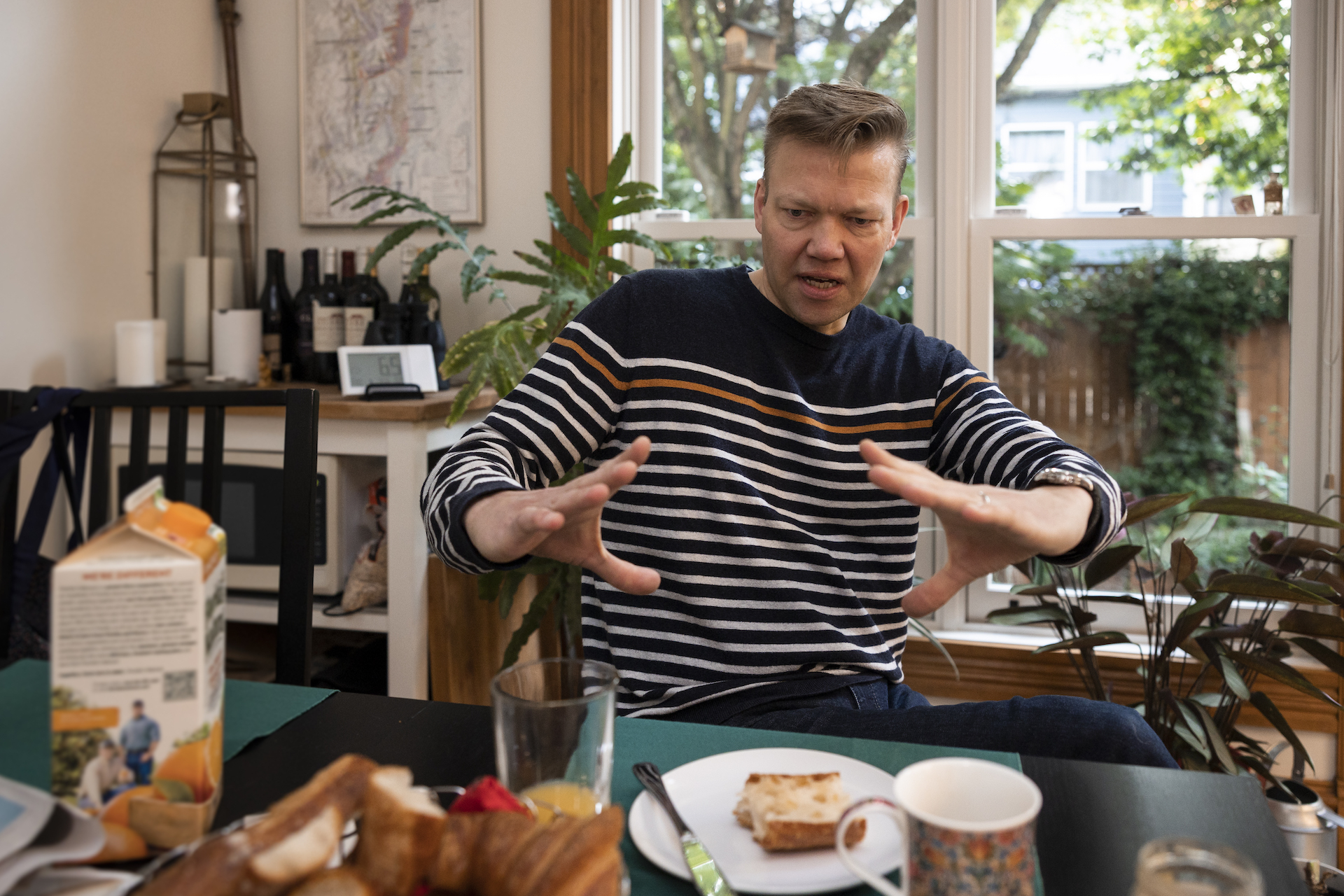
WA: Do you feel like your motivation for working in stop-motion has changed or evolved from what first drove you to start working in the field?
No, it’s still the same thing, seeing the characters coming to life on-screen is just so magical that when you sometimes turn away from the screen, you wonder why the puppet is not moving around on your set!
I know it sounds crazy, but that is sometimes how it really feels—and I think the artistic struggle is a part of it as well.
If you had a form that would give you precisely what you wanted, it would all quite quickly become very boring—but every time I start a shot, there are always elements that I’m not quite sure how to tackle.
I’m not even sure if it’s going to be any good, and I think that notion is what keeps it exciting and challenging.
“Pinocchio” can be seen on Netflix
Collaborators

WeAnimate Magazine is dedicated to all the people who animate and make things, lines, and ideas come to life.
WeAnimate ApS is founded and owned by The Danish Animation Society (ANIS) www.anis.nu
Tell us what you think? Tell us at hello@weanimate.dk | #weanimate | our Privacy Policy


